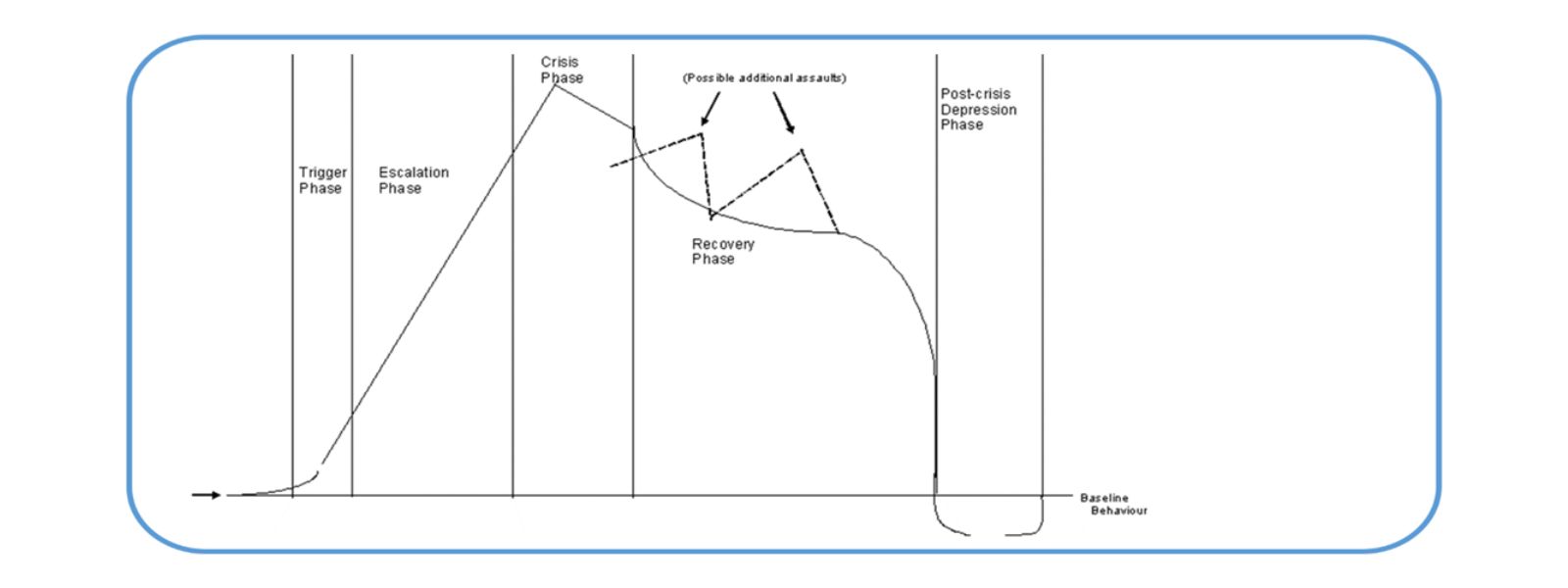Distressed Behaviours
Distressed Behaviours
Distressed Behaviours
What do we mean by ‘distressed behaviour?
We can view all behaviour as a form of communication and children and young people (CYP) will at times communicate their distress through their behaviour in the hope their needs will be met. One way they may do that is through displaying physically challenging behaviour. Physically challenging behaviour is defined as behaviour causing or threatening physical harm towards others. It includes hitting, kicking, biting and using weapons. It can also include breaking toys or other possessions.
There are two types of physically challenging behaviour: ‘proactive’ and ‘reactive’. Proactive physically challenging behaviour refers to goal-directed behaviour in which the child/young person is generally unprovoked by others. Reactive physically challenging behaviour occurs when a child or young person is feeling angry and is provoked by others (Kaye & Eardley, 2011). Physically challenging behaviour does not include general behaviour that challenges or verbal comments.
Why might some children and young people display physically challenging behaviour?
Proactive physically challenging behaviour: Understanding behaviour as communication
Understanding why a child or young person is displaying physically challenging behaviour can enable you to provide them with effective support and reduce the risk of the behaviour reoccurring. Functions of behaviour include expressing emotion/emotional regulation; gaining social interaction with adults or peers; obtaining things or events; avoidance of people, situations, events, activities etc.; and trying to gain control or feel secure. It is possible that the young person may have an unmet need relating to SEND or trauma that may be underpinning the behaviour. Completing an analysis of the possible functions of a young person’s behaviour can be a helpful way of understanding their behaviour, in order to provide them with alternative methods to get their needs met. ABC (Antecedent, Behaviour, Consequence) Charts are a commonly used method of doing this. Further support can be provided by your school’s Educational Psychologist.
Reactive physically challenging behaviour: Understanding the ‘fight or flight’ response
Flight/flight is the body’s automatic and unconscious response to a perceived physical or psychological threat/danger within the environment. When this happens, the emotional part of the brain takes over and so we are unable to make reasoned or informed decisions. Some CYP may therefore display physically challenging behaviour as a result of their body’s fight/flight response. Some CYP who have experienced trauma are more likely to enter the fight/flight response and may appear to become emotionally heightened more quickly in response to certain situations. The arousal curve (overleaf) is commonly used to depict the fight/flight response and it can be helpful to create a plan for how you may support CYP at each stage of the curve (see table on pages 6 and 7).
Further information about the flight/flight response is available here.
A note on staff wellbeing: Working with children and young people who display physically challenging behaviour can have an emotional and physical impact upon staff who support them. It is important to consider the wellbeing of these staff and how they can be supported in school
The Arousal Curve
(see table for further exploration of behaviours that may be seen and strategies that may be used at each stage).
Creating a calm classroom/school environment
Developing a calm school environment may reduce the likelihood of CYP displaying physically challenging behaviour and help promote feelings of safety at school. Things that can help to achieve this include:
reducing the amount of language you use;
using behaviour management techniques that help CYP to understand and manage their emotions, such as Emotion Coaching;
creating predictable classroom routines (e.g. through use of visual timetables);
using softer lighting/natural light and reducing brightly coloured displays;
regularly engaging in mindfulness or yoga; and
creating calming corners within the classroom.
De-escalation and proactive support:
Some CYP identified as being more likely to display physically challenging behaviour may benefit from direct teaching of emotional regulation skills as part of their safety plan; the identification of a specific key adult with whom they can build a trusting relationship; the use of social stories in relation to the behaviour; and an agreed planned response developed with the young person, emphasising prevention and de-escalation, e.g. The Incredible 5 Point Scale. Please see the Social, Emotional and Mental Health section for further details.
Physically challenging behaviour and ‘positive handling techniques’
There may be occasions where, despite using prevention and de-escalation strategies, CYP continue to move up the arousal curve and display physically challenging behaviour. When this happens, adults may be required (in extreme circumstances) to use positive handling techniques. These should only be used when absolutely necessary (i.e. where safety is compromised) and for as short a time as possible. It is important that staff are trained in how to do this safely and are supported after using these techniques. Common approaches used within schools include Team-Teach. It is best practice to agree any positive handling techniques with CYP’s parents/carers. If it has been necessary to use positive handling, this needs to be clearly recorded and parents/carers should be informed. It is best practice to ensure that staff are fully debriefed after any incidents. It is also important that reparative work is undertaken following any incidents, to reengage the young person and repair any relationships potentially affected by the incident. Please note that in cases where CYP have experienced previous trauma, behaviours can be exacerbated by the use of restraint.
For further information see: ‘Use of Reasonable Force: Advice for Head Teachers, Staff and Governing Bodies’ (Department for Education, 2013).
